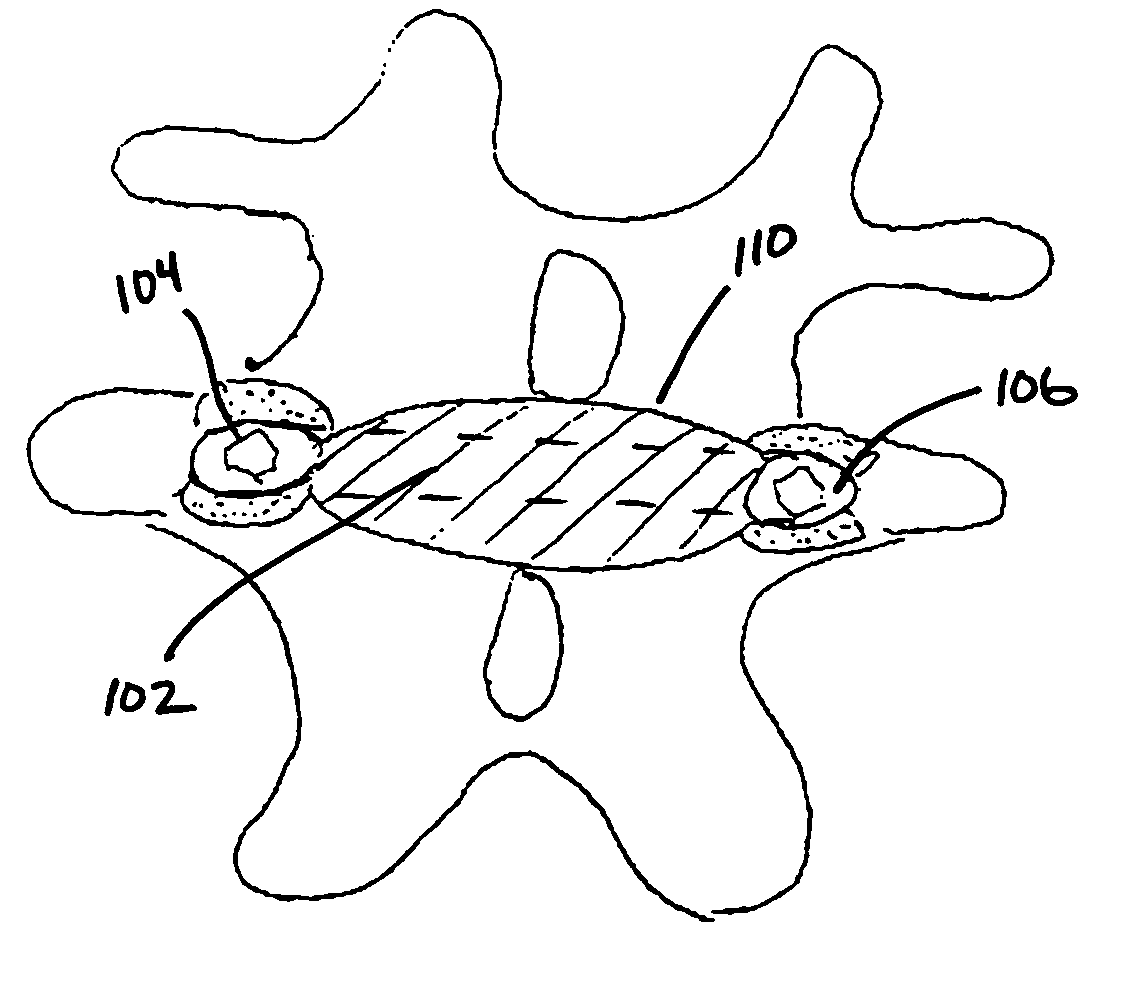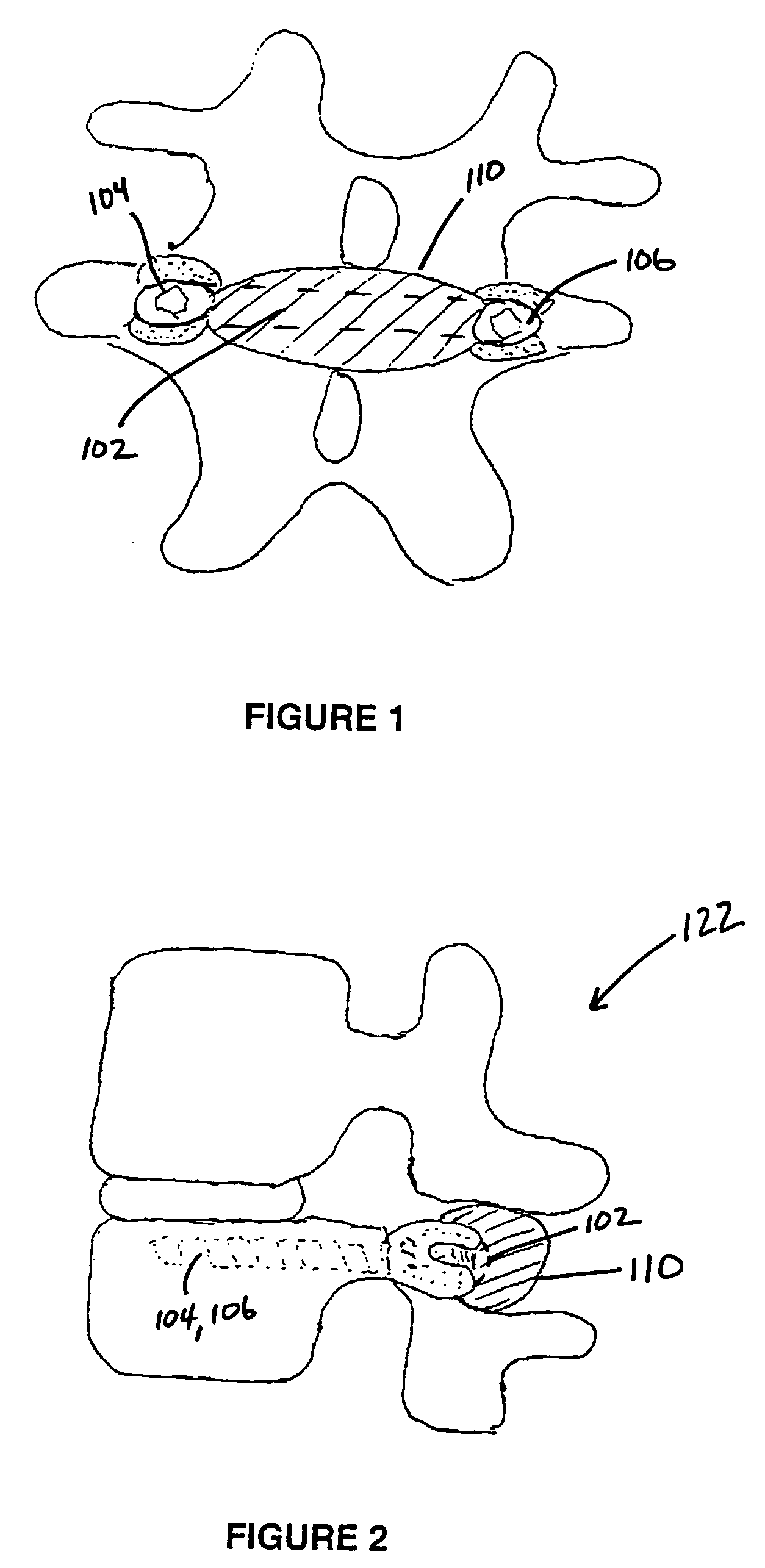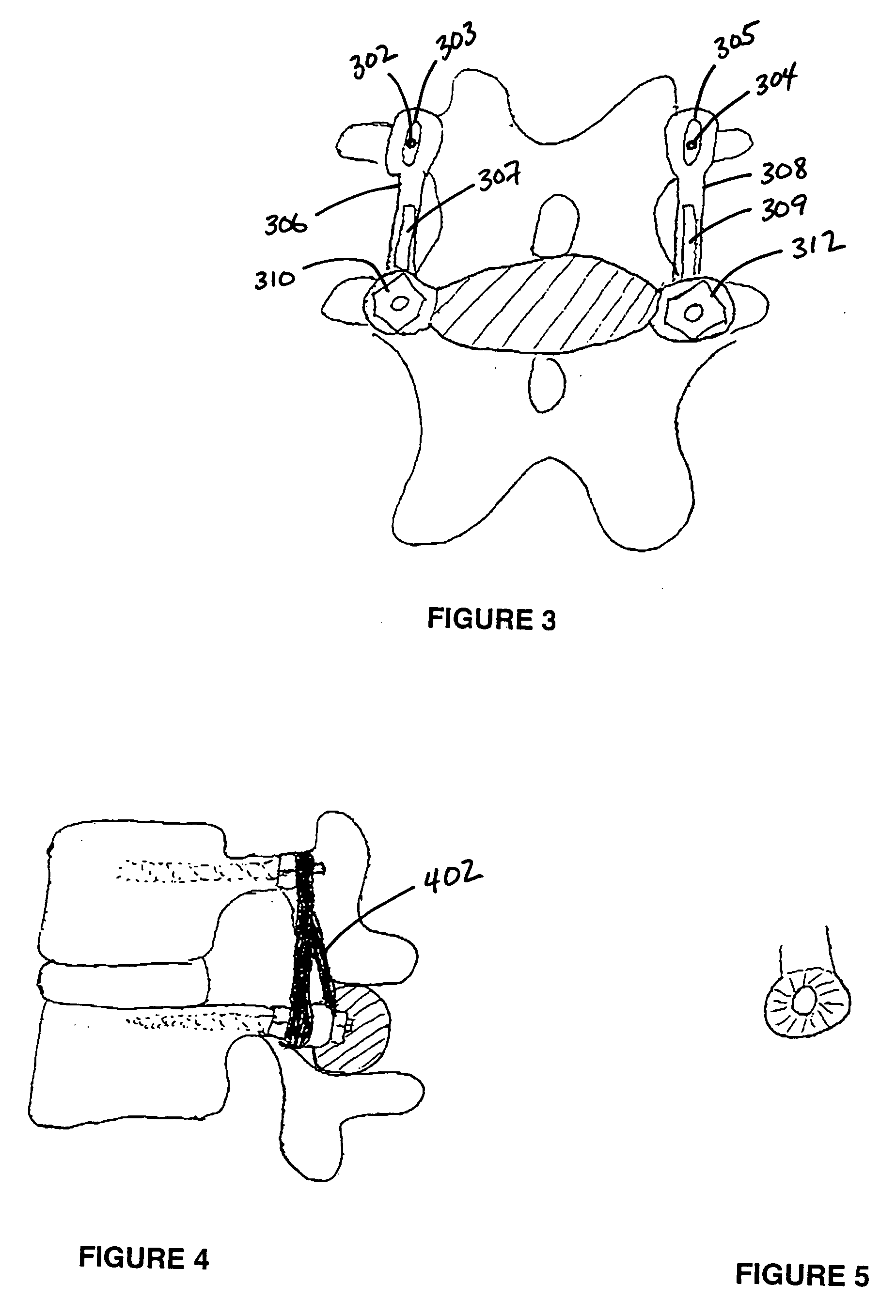Devices to prevent spinal extension
a technology of spinal cord extension and device, applied in the field of spinal cord surgery, can solve the problems of low back pain in some patients, and achieve the effects of preventing pain and other complications, inhibiting full extension, and limiting spinal flexion, rotation and/or lateral bending
- Summary
- Abstract
- Description
- Claims
- Application Information
AI Technical Summary
Benefits of technology
Problems solved by technology
Method used
Image
Examples
Embodiment Construction
[0027] This invention minimizes or eliminates spinal extension through the use of a generally transverse member, preferably anchored at two points on the same vertebra to prevent adjacent vertebrae from coming closer together. The preferred embodiment, shown in FIGS. 1 and 2, uses a sleeved rod 102 or cable placed transversely between pedicle screws 104, 106. The sleeve 110 impinges upon the spinous processes and lamina of the vertebra 120 holding the pedicle screws and the spinous processes and lamina of the vertebra 122 directly above the vertebra with the pedicle screws 104, 106. As such, the device prevents spinal extension at the level it is inserted. For example, the device would be placed between pedicle screws at L4 to prevent extension of the spine between L3 and L4.
[0028] The sleeve could be made of any compressible or resilient material that has cushion-like properties and sufficient tensile strength. For example, natural and synthetic rubbers, elastomers, encased gels a...
PUM
 Login to View More
Login to View More Abstract
Description
Claims
Application Information
 Login to View More
Login to View More - R&D
- Intellectual Property
- Life Sciences
- Materials
- Tech Scout
- Unparalleled Data Quality
- Higher Quality Content
- 60% Fewer Hallucinations
Browse by: Latest US Patents, China's latest patents, Technical Efficacy Thesaurus, Application Domain, Technology Topic, Popular Technical Reports.
© 2025 PatSnap. All rights reserved.Legal|Privacy policy|Modern Slavery Act Transparency Statement|Sitemap|About US| Contact US: help@patsnap.com



